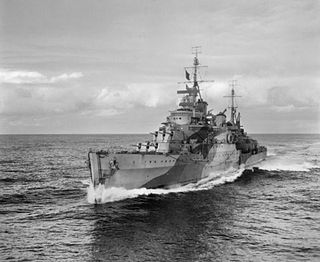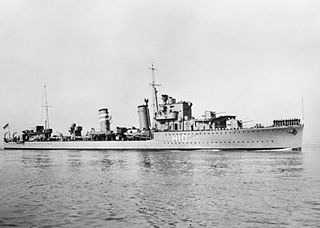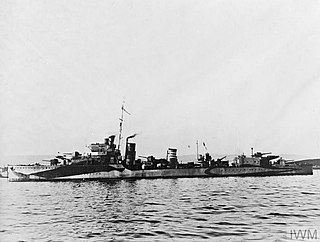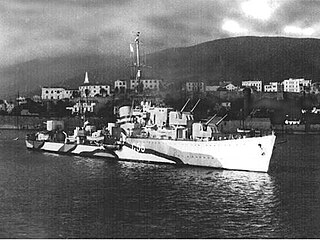Plot
A vital convoy is heading to Malta, escorted by five Royal Navy light cruisers, including HMS Artemis. It is afternoon, and Artemis, commanded by Captain Troughton-Harrington-Yorke, has just beaten off a number of air attacks. An Italian surface fleet, with the battleships San Martino and Legnano and several light cruisers, will intercept it soon. The convoy must get through, so the British ships must fight. The crew, from the command level officers on the bridge down to the ordinary seamen in the lower decks, prepares for the coming confrontation, while part of them is also occupied with their own, very colorful lives.
Upon receiving reports from the lookouts at the masthead of enemy ships ahead, the cruisers lay a smoke screen, then attack. The ship sustains two hits, the first of which kills the ship's surgeon and several other crewmembers, while the second one does more damage to the ship and requires the flooding of "X" gun turret aft. The other two turrets continue to fire upon the Italian fleet, while destroyers lay a torpedo attack. A single shell, whose history from the mining of the ores to the firing of the gun is described in detail, hits the Italian flagship and strikes the final blow to the morale of the enemy commanders. With the San Martino being hit by a torpedo, the Italian fleet retires as night falls, and the convoy continues for Malta.
The captain remains on the bridge, more determined than ever to continue "the long struggle of sea power against tyranny", which so many naval commanders fought before him. [2]

The second USS California (ACR-6), also referred to as "Armored Cruiser No. 6", and later renamed San Diego, was a United States Navy Pennsylvania-class armored cruiser.

HMS Liverpool, named after the port city of Liverpool in north-west England, was a Town-class light cruiser of the Royal Navy in service from 1938 to 1952.

The Battle of Calabria, known to the Italian Navy as the Battle of Punta Stilo, was a naval battle during the Battle of the Mediterranean in the Second World War. Ships of the Italian Regia Marina were opposed by vessels of the British Royal Navy and Royal Australian Navy. The battle occurred 30 miles to the east of Punta Stilo, Calabria, on 9 July 1940. It was one of the few pitched battles of the Mediterranean campaign during the Second World War involving large numbers of ships on both sides. Both sides claimed victory, but in fact the battle was a draw and everyone returned to their bases safely.


Sink the Bismarck! is a 1960 black-and-white CinemaScope British war film based on the 1959 book The Last Nine Days of the Bismarck by C. S. Forester. It stars Kenneth More and Dana Wynter and was directed by Lewis Gilbert. To date, it is the only film made that deals directly with the operations, chase and sinking of the battleship Bismarck by the Royal Navy during the Second World War. Although war films were common in the 1960s, Sink the Bismarck! was seen as something of an anomaly, with much of its time devoted to the "unsung back-room planners as much as on the combatants themselves". Its historical accuracy, in particular, met with much praise despite a number of inconsistencies.

The Second Battle of Sirte was a naval engagement in the Mediterranean Sea, north of the Gulf of Sidra and southeast of Malta, during the Second World War. The escorting warships of a British convoy to Malta held off a much more powerful squadron of the Regia Marina. The British convoy was composed of four merchant ships, escorted by four light cruisers, one anti-aircraft cruiser and 17 destroyers. The Italian force comprised a battleship, two heavy cruisers, one light cruiser and ten destroyers. Despite the initial British success at warding off the Italian squadron, the Italian fleet attack delayed the convoy's planned arrival before dawn, which exposed it to intense air attacks that sank all four merchant ships and one of the escorting destroyers in the following days.

Lieutenant Commander Malcolm David Wanklyn, was a Royal Navy commander and one of the most successful submariners in the Western Allied navies during the Second World War. Wanklyn and his crew sank 16 enemy vessels.

The E and F-class destroyers were a group of 18 destroyers built for the Royal Navy during the 1930s. The ships were initially assigned to the Home Fleet, although they reinforced the Mediterranean Fleet during the Italian invasion of Abyssinia of 1935–36 and enforced the Non-Intervention Agreement during the Spanish Civil War of 1936–1939. After the beginning of the Second World War in August 1939, the E-class ships were mostly assigned to escort duties under the Western Approaches Command, while the Fs were assigned to escort the ships of the Home Fleet. Between them they sank four German submarines through March 1940 while losing only one ship to a submarine.

Zara was a heavy cruiser built for the Italian Regia Marina, the lead ship of the Zara class. Named after the Italian city of Zara, the ship was built at the Odero-Terni-Orlando shipyard beginning with her keel laying in July 1928, launching in April 1930, and commissioning in October 1931. Armed with a main battery of eight 8-inch (200 mm) guns, she was nominally within the 10,000-long-ton (10,000 t) limit imposed by the Washington Naval Treaty, though in reality she significantly exceeded this figure.

HMS Penelope was an Arethusa-class light cruiser of the Royal Navy. She was built by Harland & Wolff ; her keel was laid down on 30 May 1934. She was launched on 15 October 1935, and commissioned 13 November 1936. She was torpedoed and sunk by German U-boat U-410 near Naples with great loss of life on 18 February 1944. On wartime service with Force K, she was holed so many times by bomb fragments that she acquired the nickname "HMS Pepperpot".

Trento was the first of two Trento-class cruisers; they were the first heavy cruisers built for the Italian Regia Marina. The ship was laid down in February 1925, launched in October 1927, and was commissioned in April 1929. Trento was very lightly armored, with only a 70 mm (2.8 in) thick armored belt, though she possessed a high speed and heavy main battery of eight 203 mm (8 in) guns. Though nominally built under the restrictions of the Washington Naval Treaty, the two cruisers significantly exceeded the displacement limits imposed by the treaty.
Convoy HX 84 was the 84th of the numbered series of Allied North Atlantic HX convoys of merchant ships from Halifax, Nova Scotia, and Bermuda to Liverpool, England, during the Battle of the Atlantic. Thirty-eight ships escorted by the armed merchant cruiser HMS Jervis Bay departed from Halifax on 28 October 1940, eastbound to Liverpool.

The Silent Enemy is a black and white 1958 British action film directed by William Fairchild. It stars Laurence Harvey as Lionel "Buster" Crabb and describes his exploits during World War II. Based on Marshall Pugh's book, "Commander Crabb", the film followed the publicity created by Crabb's mysterious disappearance and likely death during a Cold War incident a year earlier. It was the first Universal Pictures film in SuperScope.

HMS Faulknor was the flotilla leader for the F-class destroyers built for the Royal Navy during the 1930s. The ship had a particularly active operational role during World War II, being awarded 11 battle honours, and was known as "The hardest worked destroyer in the Fleet". She was the first ship to sink a German U-boat, took part in the Norwegian Campaign, served with Force H in the Mediterranean on the Malta Convoys, escorted convoys to Russia and across the Atlantic, and saw action during the invasions of Sicily, Italy and Normandy, and was at the liberation of the Channel Islands. She was then decommissioned and sold for scrap in late 1945.

HMS Forester was one of nine F-class destroyers built for the Royal Navy during the early 1930s. Although assigned to the Home Fleet upon completion, the ship was attached to the Mediterranean Fleet in 1935–36 during the Abyssinia Crisis. A few weeks after the start of World War II in September 1939, she helped to sink one German submarine and then participated in the Second Battle of Narvik during the Norwegian Campaign of 1940. Forester was sent to Gibraltar in mid-1940 and formed part of Force H where she participated in the attack on the Vichy French ships at Mers-el-Kébir and the Battle of Dakar between escorting the aircraft carriers of Force H as they flew off aircraft for Malta and covering convoys resupplying and reinforcing the island until late 1941. During this time the ship helped to sink another German submarine.

Single-Handed is a 1953 British war film directed by Roy Boulting and starring Jeffrey Hunter, Michael Rennie and Wendy Hiller. It is based on the 1929 novel Brown on Resolution by C. S. Forester. Set largely in the Pacific, Hunter stars as a Canadian sailor serving on a British warship who battles single-handedly to delay a German World War II warship long enough for the Royal Navy to bring it to battle. The film was released in the United States as Sailor of the King.

The Battle of Cape Passero (1940), was a Second World War naval engagement between the British light cruiser HMS Ajax and seven torpedo boats and destroyers of the Italian Regia Marina, southeast of Sicily, in the early hours of 12 October 1940. It took place in the aftermath of a British supply operation to Malta.

HMS Lightning was an L-class destroyer of the Royal Navy. She was launched on 22 April 1940 and sunk on 12 March 1943 by German Motor Torpedo Boat S-55.

Pola was a Zara-class heavy cruiser of the Italian Regia Marina, named after the Italian city of Pola. She was built in the Odero Terni Orlando shipyard in Livorno in the early 1930s and entered service in 1932. She was the fourth and last ship in the class, which also included Zara, Fiume, and Gorizia. Compared to her sisters, Pola was built as a flagship with a larger conning tower to accommodate an admiral's staff. Like her sisters, she was armed with a battery of eight 203-millimeter (8.0 in) guns and was capable of a top speed of 32 knots.

United States Navy operations during World War I began on April 6, 1917, after the formal declaration of war on the German Empire. The United States Navy focused on countering enemy U-boats in the Atlantic Ocean and the Mediterranean Sea while convoying men and supplies to France and Italy. Because of United States's late entry into the war, her capital ships never engaged the German fleet and few decisive submarine actions occurred.



















